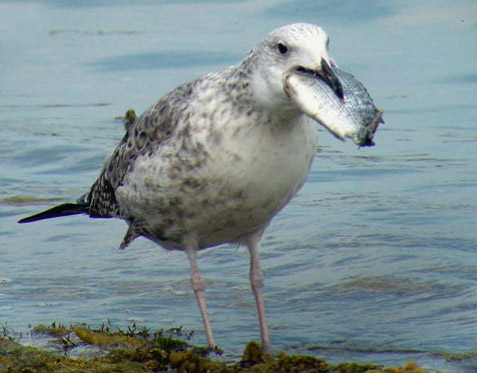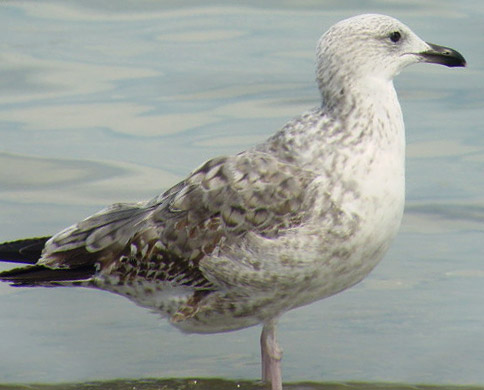 Heuglin's Gull (L. heuglini / antelius)
Heuglin's Gull (L. heuglini / antelius)
(last update:
Heuglini 2cy, March 02 2001, Bahrain: Ashkar harbour.
A very strong and dominant individual. Note the vicious and aggressive facial expression and clear gonydeal angle in the bottom images. A rather odd moult strategy in the coverts: 2 innermost greater coverts, 4 medians and 1 lesser are replaced. The scapulars are second generation. The under wing appeared dark, extensively brown and the inner greater coverts are all dark, without a pale panel. The upper two tertials are new, the tail is almost all black, nearly all the feathers are second generation. Note the warm brown tone in the old juvenile coverts and the piano-key (barred) pattern on these feathers, resembling some vegae and mongolicus on the Japanese site of Mr. Ujihara. Note the long tibia and the extensive streaking on head, neck and flank. (Yes, it swallowed this fish!)
In Bahrain, such large birds are either cachinnans or heuglini. Cachinnans, being a southern breeder from the steppe belt, normally doesn't show such fresh looking juvenile feathers (note the greater coverts) and cachinnans normally doesn't show active post-juvenile moult in February. Moreover, most cachinnans have finished their post-juvenile moult by early November as 1cy birds. Hence, active post-juvenile moult in February in 2cy birds is a strong indicator for nortern breeders from the tundra region, i.e. heuglini and fuscus in Bahrain.
By July, when some of these birds return to N Europe, the wing-coverts will appear worn and they show just a simple arrow-pattern.


